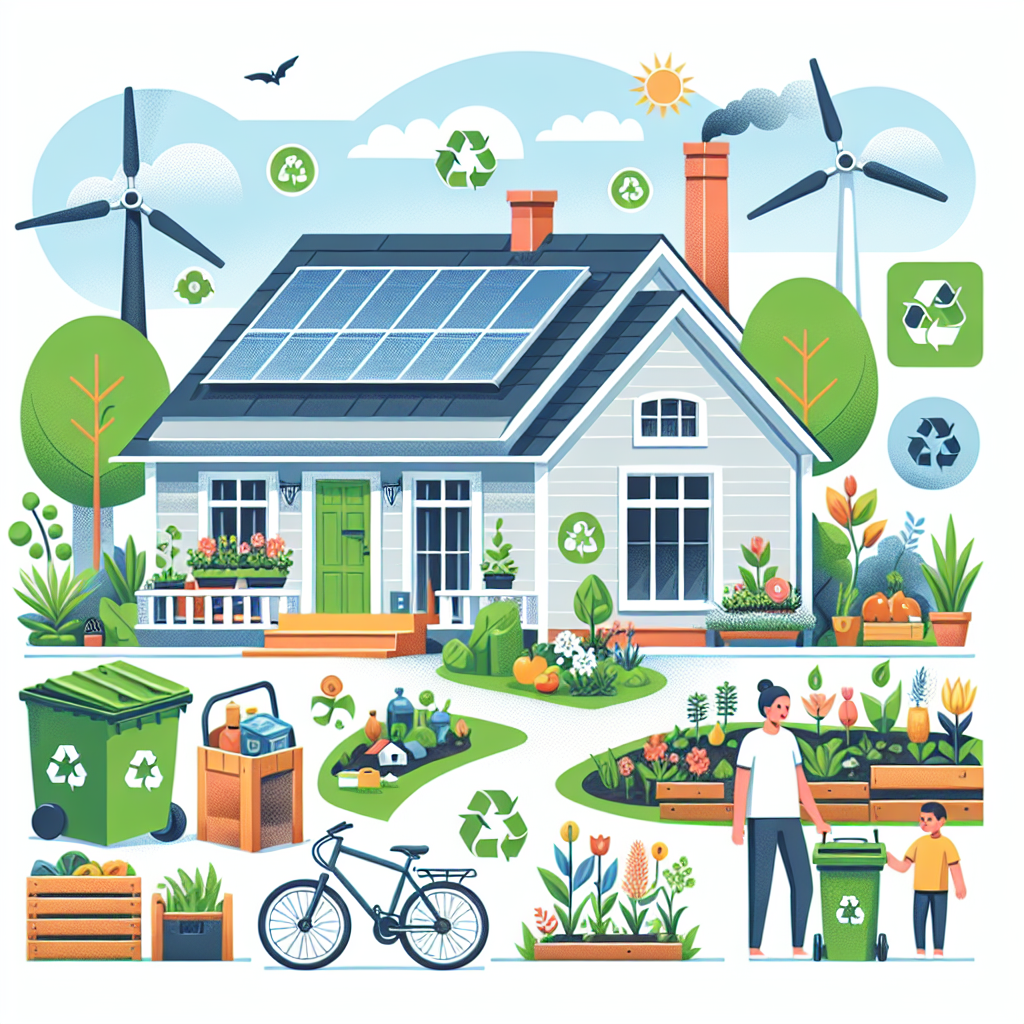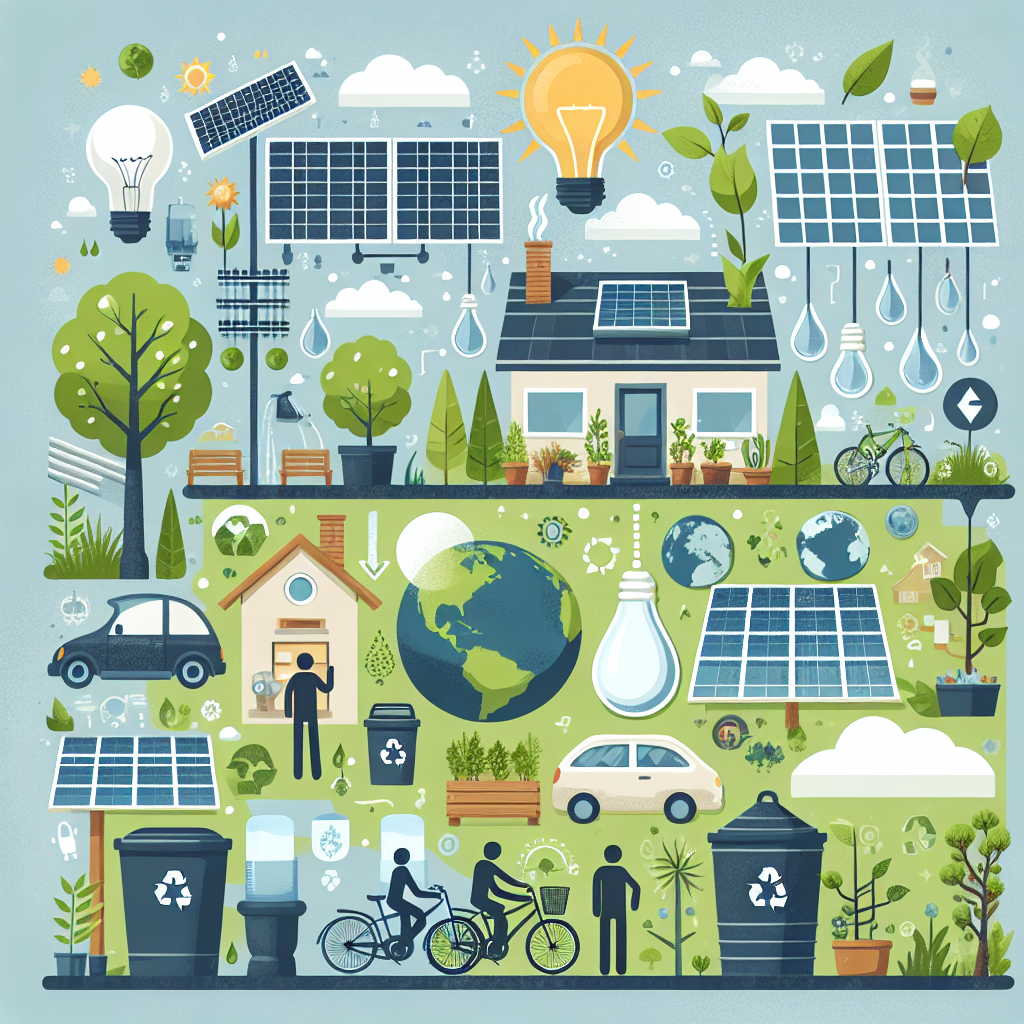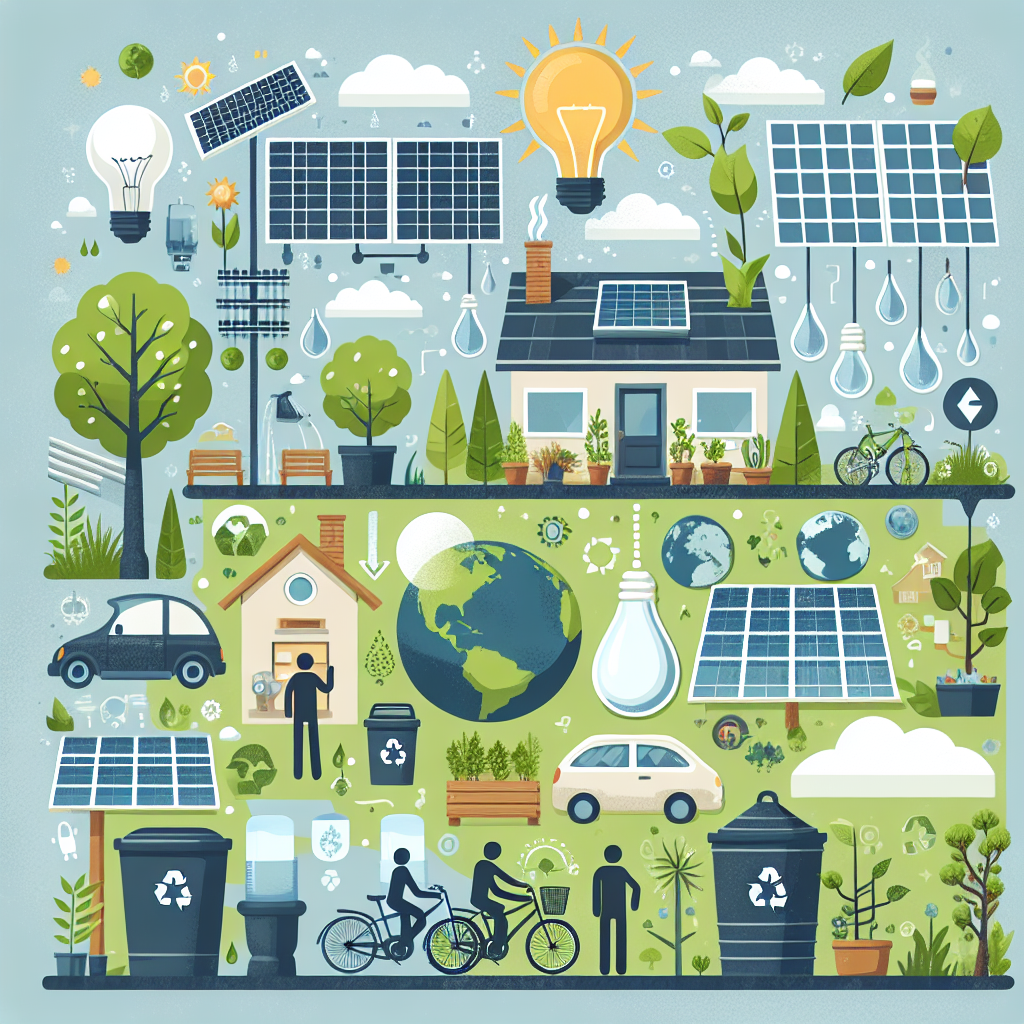Living an eco-friendly lifestyle doesn’t have to be complicated or overwhelming. With a few simple changes and the help of sustainable home gadgets, you can make a positive impact on the environment without sacrificing style or comfort. In this article, discover the latest innovations in eco-friendly living, from energy-saving devices to water-efficient appliances, and learn how you can incorporate these practices into your daily life. Whether you’re a seasoned environmentalist or just starting your journey towards a more sustainable future, this article has something for everyone. So let’s explore the world of eco-friendly living together and make a difference in our homes and beyond.
Sustainable Home Gadgets
Smart Thermostats
One of the top sustainable home gadgets that you should consider investing in is a smart thermostat. This smart device allows you to control the temperature of your home remotely, ensuring that you only use energy when necessary. With a smart thermostat, you can easily adjust the temperature settings based on your schedule and preferences. Some advanced models even have learning capabilities, adapting to your habits and optimizing energy usage. By reducing energy consumption and minimizing heating or cooling when no one is home, smart thermostats contribute to a more sustainable and energy-efficient home.
Energy-Efficient Appliances
Another essential sustainable gadget for your home is energy-efficient appliances. From refrigerators to washing machines, energy-efficient models are designed to consume less energy while still providing top-notch performance. These appliances are built with innovative technology that significantly reduces energy consumption, leading to lower electricity bills and a smaller carbon footprint. Look for appliances with the ENERGY STAR certification, as they have met rigorous energy efficiency standards set by the Environmental Protection Agency (EPA). By replacing your outdated appliances with energy-efficient ones, you can make a substantial impact on the environment and save money in the long run.
Solar-Powered Chargers
To embrace sustainable living, incorporating solar-powered chargers into your home is a fantastic idea. These chargers harness the power of the sun to charge your electronic devices such as smartphones, tablets, or even power banks. By utilizing renewable energy, you reduce your reliance on conventional electricity and decrease greenhouse gas emissions. Solar-powered chargers are portable and easy to use, making them ideal for outdoor activities or emergencies. With one of these gadgets, you can take advantage of clean energy while keeping your devices powered up.
Water-Saving Devices
Conserving water is a crucial aspect of sustainable living, and using water-saving devices in your home can make a substantial difference. One popular water-saving gadget is a low-flow showerhead. These devices regulate water flow, reducing the amount of water used during showers without compromising on water pressure or the quality of your bathing experience. Additionally, installing faucet aerators can also help conserve water by adding air to the water stream, effectively reducing water usage while maintaining sufficient pressure. By implementing these gadgets, you can contribute to water conservation efforts and reduce your water bills at the same time.
LED Lighting
When it comes to sustainable home gadgets, LED lighting is a must-have. LED (Light Emitting Diode) bulbs consume significantly less energy compared to traditional incandescent or fluorescent bulbs. They are highly efficient and have a longer lifespan, meaning you won’t have to replace them as frequently. LED bulbs are available in various shapes and sizes to suit your lighting needs, and they produce little to no heat, reducing the load on your cooling systems. Making the switch to LED lighting not only helps conserve energy but also reduces the amount of waste generated by frequently replacing traditional light bulbs.

Sustainable Home Practices
Reduce, Reuse, Recycle
The mantra of “reduce, reuse, recycle” should be the guiding principle in your sustainable home practices. By reducing your consumption and waste generation, you can minimize your environmental impact. Start by evaluating your purchases and only buying what you truly need, avoiding unnecessary packaging or single-use items. Reusing items such as glass jars, shopping bags, or even repurposing old furniture can help reduce waste and extend the lifespan of products. Lastly, recycling should become a habit in your household. Separate recyclables from your regular trash and ensure they are properly disposed of through recycling programs. Following these practices will contribute to a more sustainable lifestyle overall.
Composting
Composting is a simple yet effective way to reduce food waste while creating nutrient-rich soil for your garden. Instead of throwing away fruit and vegetable scraps, coffee grounds, or eggshells, you can divert them from the landfill and turn them into compost. By composting, you significantly reduce the amount of waste that ends up in landfills, where it contributes to greenhouse gas emissions. The organic matter you collect in a compost bin or pile decomposes over time, producing nutrient-rich compost that can be used to fertilize your plants and improve soil health. Composting is not only sustainable but also a rewarding practice that allows you to close the loop and contribute to a circular economy.
Rainwater Harvesting
Rainwater harvesting is an excellent sustainable practice that can help you conserve water and reduce your reliance on municipal water sources. By collecting rainwater from your roof or other surfaces, you can store it for later use in watering your garden, washing your car, or even flushing toilets. This practice is particularly valuable in areas with limited water resources or during times of drought. Rainwater harvesting systems can range from simple barrels or buckets to more complex setups with underground tanks and filtration systems. By utilizing rainwater, you can play a part in conserving water and protecting our precious water sources.
Natural Cleaning Products
Switching to natural cleaning products is not only beneficial for your health but also for the environment. Conventional cleaning products often contain harmful chemicals that can be toxic to humans and aquatic life when they enter water systems. By opting for natural alternatives, such as vinegar, baking soda, or essential oils, you can reduce your exposure to harmful substances and minimize pollution. These natural cleaning products are just as effective at cleaning, disinfecting, and deodorizing, without the negative impact on your health or the planet. Making this switch will contribute to a cleaner and safer home environment.
Energy Conservation
Conserving energy should be a fundamental practice in every sustainable home. Simple actions like turning off lights when not in use, unplugging electronics, and using natural light whenever possible can have a significant impact on reducing energy consumption. Additionally, optimizing the use of appliances by running full loads, using energy-saving modes, or air-drying clothes can further reduce energy usage. Embrace smart power strips that automatically cut power to electronics when they are not in use or set timers to regulate when devices should turn on or off. By adopting energy-conserving habits, you can reduce your carbon footprint and contribute to a more sustainable future.
Proper Insulation
Proper insulation is essential for a sustainable home. Well-insulated homes retain heat during the winter and keep cool air inside during the summer, reducing the need for excessive heating or air conditioning. Insulation materials such as fiberglass, cellulose, or foam provide effective barriers against heat transfer and help maintain a comfortable indoor temperature year-round. By investing in proper insulation, you can minimize energy waste, decrease your reliance on artificial heating or cooling, and save money on utility bills. Properly insulating your home is a long-term investment that will pay off both financially and environmentally.
Unplug Electronics
Even when electronic devices are turned off, they can still consume electricity if they are plugged in. This phenomenon is known as standby power or vampire power. To prevent unnecessary energy consumption, make it a habit to unplug electronics when they are not in use or plug them into power strips that can be easily switched off. This simple practice can significantly cut down on your electricity usage and lower your utility bills. By eliminating vampire power, you actively contribute to energy conservation and reduce your environmental impact.
Choose Sustainable Materials
When it comes to construction or renovation projects, opting for sustainable materials is vital. Materials such as bamboo, reclaimed wood, recycled glass, or natural stone are more eco-friendly alternatives compared to their conventional counterparts. These sustainable materials are often sourced responsibly, minimizing environmental damage, and reducing the depletion of natural resources. Additionally, they are durable and long-lasting, meaning they won’t need frequent replacement. By choosing sustainable materials, you promote a more circular economy and support the development of greener construction practices.
Planting Trees
Planting trees is a powerful way to mitigate climate change and enhance the sustainability of your home environment. Trees act as natural carbon sinks, absorbing carbon dioxide from the atmosphere and releasing oxygen. They also provide shade, reducing the need for excessive air conditioning during hot summer months. Planting trees in your yard or participating in tree-planting initiatives in your community helps enhance biodiversity, improve air quality, and create a more pleasant and sustainable living environment. Additionally, trees can increase property value and create a sense of serenity and beauty around your home.
In conclusion, embracing sustainable home gadgets and practices is crucial for reducing our environmental impact, conserving resources, and creating a greener future. From smart thermostats to energy-efficient appliances, these gadgets help us minimize energy consumption and reduce our carbon footprint. Sustainable practices like composting, rainwater harvesting, and proper insulation further enhance our efforts towards a more sustainable lifestyle. By adopting these eco-friendly habits and utilizing sustainable gadgets, we can create homes that are not only comfortable but also environmentally conscious. Let’s all take the necessary steps to make our homes more sustainable and contribute to a healthier planet for future generations.


